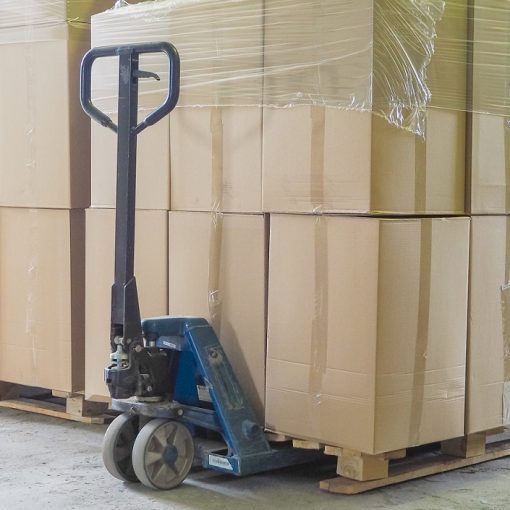How to Choose the Right Storage Unit for Your Life Transition
Life transitions can be overwhelming. Whether you’re downsizing, moving across the city, dealing with a family estate, or making room for a home renovation, one common need often surfaces: storage. Choosing the right unit matters more than most people expect. It’s not just about square footage. It’s about flexibility, access, security, and matching your unique situation to the right solution.
This guide will help you make confident, informed choices so your belongings stay protected and your transition goes more smoothly.
Understanding Why You Need Storage
The first step is to get clear on your reason for needing storage. Different situations create different storage needs. For example, if you’re renovating, you might only need short-term storage and easy weekend access. On the other hand, someone relocating for work might need longer-term storage while figuring out permanent housing.
Think about what you’re storing, how long you’ll need to store it, and how often you might need to access it. That is to say, the better you understand your purpose, the better your choice will be.
Similarly, knowing the value—sentimental or financial—of what you’re storing can help you choose the right size and type of unit. For instance, delicate furniture may require climate control, while yard tools might not.
Estimating the Size You’ll Need
Once you know your goals, it’s time to estimate space. Many people overestimate and rent units that are too large, costing more than necessary. Conversely, choosing a unit that’s too small can lead to frustration and cluttered stacking that risks damaging your items.
Most facilities offer visual guides online to help. For instance, a 5×5 unit can typically hold a few boxes and small furniture. A 10×10 can usually hold the contents of a one-bedroom apartment. However, storage needs vary from person to person. Therefore, it’s best to list what you plan to store and compare it with sizing charts or speak with staff directly.
Another tip is to pack efficiently in labeled, stackable boxes. In other words, how you organize your items can often help you go one size down and save money in the process.
Choosing Between Climate-Controlled and Standard Units
Not everything needs to be climate-controlled, but for certain items, it makes all the difference. Temperature swings and moisture can damage electronics, photos, books, musical instruments, and wooden furniture. Consequently, if you’re storing these types of belongings for more than a couple of weeks, it’s worth considering this option.
On the other hand, tools, outdoor gear, and certain appliances usually do fine in standard units. That is to say, it’s less about cost and more about what’s best for your items.
In Calgary, the changing seasons can affect storage environments significantly. Likewise, even if your storage need is short-term, a late winter or humid summer stretch could cause long-term damage. Always check the predicted weather for the coming months and plan accordingly.
Consider Access and Convenience
Some people need frequent access to their stored items. Others plan to lock up the unit and return months later. Your habits during this life transition should guide the facility and unit you choose.
For instance, a drive-up unit is ideal for loading heavy furniture or boxes directly from a moving truck. In contrast, indoor units are often better protected from weather and may feel more secure for longer storage periods.
Meanwhile, think about facility hours. Do you need 24-hour access, or is business-hour availability enough? Asking yourself these questions can help you avoid last-minute stress when you realize you can’t retrieve an item on a Sunday evening.
Budgeting for Your Storage Needs
Cost is always part of the decision, but it’s important not to choose based on price alone. A slightly more expensive facility that’s closer to your home or offers better security might save you time and worry over the long run.
Firstly, compare local options and look at the full picture: monthly rate, access hours, included features, and any available discounts. For example, some storage facilities may offer promotional rates for first-time customers or discounts for long-term leases.
In addition, make sure to understand the payment terms. Are there late fees? Is there a deposit? Knowing these ahead of time helps you plan financially and avoid surprises. If you’re planning a move or temporary downsizing, you can get an idea of storage rates from reputable facilities in the area before making a decision.
Security Features You Should Expect
Security is non-negotiable when storing your belongings. At the very least, a good facility should offer secure gate access, surveillance cameras, and individual locks. However, you may want to look for more than just the basics.
For instance, some places offer unit alarms, on-site management, or coded access logs that track entry. Most importantly, you should feel confident your items are safe even if you won’t visit often.
Above all, ask whether the facility’s security measures are updated regularly. Technology changes fast, and so do the methods that thieves use. A well-maintained, well-lit storage site makes all the difference.
Additional Tips That Can Make a Big Difference
Many people overlook a few final but important details. Firstly, don’t forget about insurance. Some homeowners or renters policies cover items in storage, but only under specific conditions. Therefore, it’s wise to double-check your policy or ask the storage facility about insurance options.
Secondly, labeling and organizing your unit with a clear aisle down the middle will save time and headaches later. To clarify, store frequently used items near the front and stack heavier boxes on the bottom to avoid injuries.
And if you’re not sure how long your transition will last, consider facilities with flexible month-to-month plans. In short, it’s always better to have options rather than being stuck in a long-term contract if plans change unexpectedly.
If you’re in the process of researching self storage in Calgary, always take time to visit the facility, ask questions, and read real customer reviews.
When to Reserve Your Unit
The best time to secure a unit is before the actual need arises. That’s because availability can drop quickly during busy moving seasons, especially in spring and summer.
To avoid scrambling last minute, reserve a unit once your moving date or renovation schedule is confirmed. Similarly, if your life transition involves a job relocation or a family change, try to build in a window of time between packing and moving. Having storage available during that gap can ease a lot of pressure.
And remember, storage is not just about putting things away—it’s also about making room for what’s next. You can always contact the facility to ask about availability or set up a visit before making a commitment.
FAQs
What size storage unit is best for a two-bedroom apartment?
A 10×10 or 10×15 unit usually fits the contents of a two-bedroom apartment, including furniture, boxes, and appliances. Be sure to measure large items and consider whether you’ll disassemble furniture.
How often can I access my storage unit?
Access depends on the facility. Some offer 24-hour entry, while others limit hours. Always check access times before renting to ensure they match your needs.
Can I store electronics in a standard storage unit?
Yes, but only for short periods and with proper protection. For longer storage or sensitive items, a climate-controlled unit is recommended to prevent damage from temperature swings and moisture.
Are there items I’m not allowed to store?
Most storage facilities prohibit flammable materials, explosives, perishable food, and live animals. Ask for a list of restricted items when signing your agreement.
Do I need insurance for my stored items?
While not always mandatory, insurance is strongly recommended. Some homeowner policies may cover storage, or you can purchase insurance through the facility or a third-party provider.




